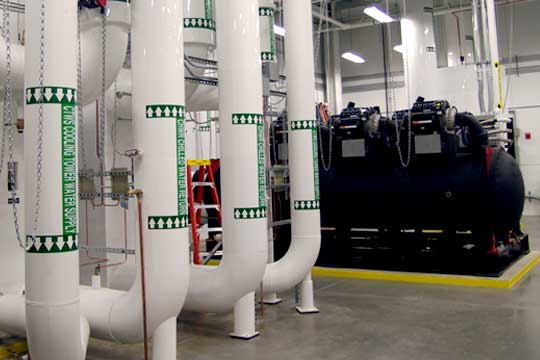
Chillers are typically the most energy-intensive equipment in a data center. The MGHPCC uses “free cooling” to minimize the amount of time that its chillers are in use. When it is cold enough outside we can turn the chillers off and use water from the cooling towers to cool the computer room. New England's relatively cool summers, allow the MGHPCC to leave its chillers off more than 70% of the time.
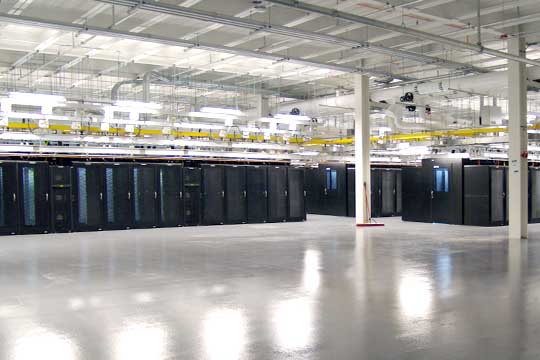
Hot aisle containment increases cooling efficiency by reducing the distance between the computers and the cooling units to less than 2 feet. It also prevents hot air generated by the computers from mixing with cold air from the cooling units, which further improves efficiency.
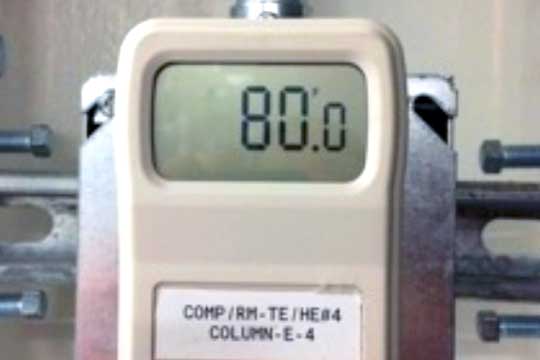
Until recently, it was common to maintain “meat locker” temperatures of 70ºF or below in a data center. Today, 80º is the norm for data centers that use modern servers and hot aisle containment to improve cooling efficiency. That gives the MGHPCC more days of free cooling, further reducing energy use.
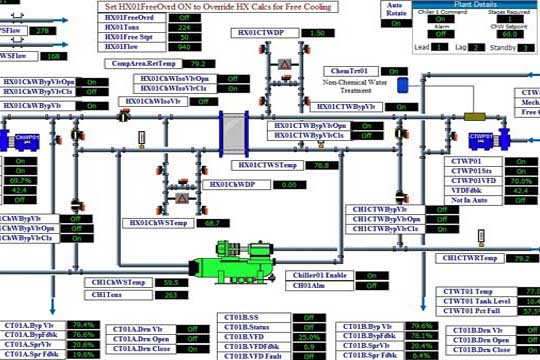
The operation of every element of the cooling system is continuously monitored and adjusted so that it is delivering just enough cooling to keep each area of the facility within its operating temperature and humidity range. In the computer room, the cooling units in the hot aisle containment pods are networked to one another so that they can react within seconds to changes in cooling load.
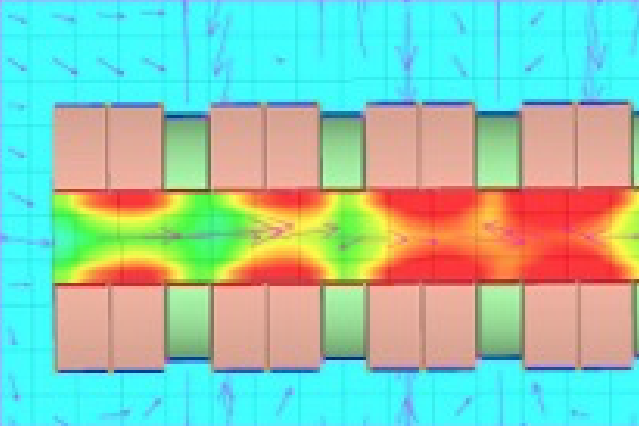
Computational fluid dynamics (CFD) models of the air flow within a hot aisle containment pod made it possible for designers to verify the placement of the cooling units and check their performance in various failure scenarios. It also helped to identify improvements to the mechanical design and operation of the hot aisle containment pods that reduced susceptibility to air leaks that would otherwise have reduced the efficiency of the cooling system.
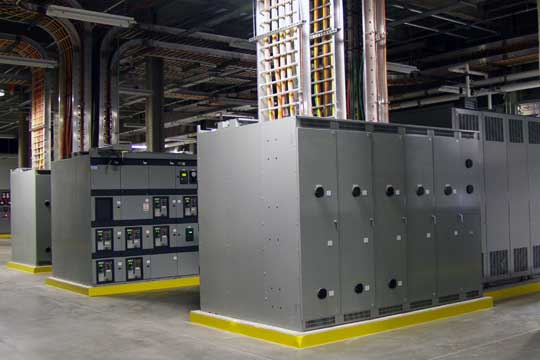
The MGHPCC uses a high voltage power distribution system, which increases efficiency while operating within voltage ranges that are supported by all modern computing equipment. Higher distribution voltages mean lower current for the same amount of power, which reduces energy loss and heat generation in the wiring. They also make it possible to eliminate an entire tier of transformers from the facility.
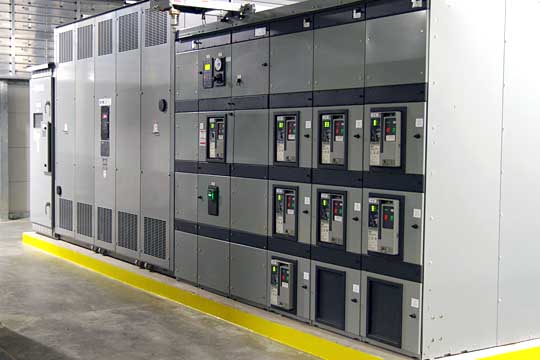
Another important source of energy loss in many data centers is the Uninterruptible Power Supply units that keep the facility running in the event of sudden loss of utility power. Many UPS units consume significant amounts of energy by doing a “double conversion” when they are not in use. The MGHPCC uses UPS technology with an operating mode that eliminates this kind of loss with no impact on performance.
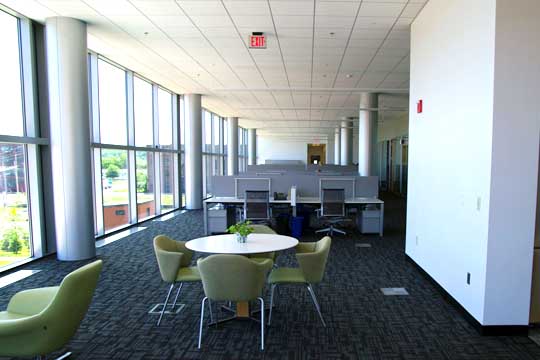
Sensors are installed in all spaces to turn the lights on or off based on actual occupancy, and daylight sensors in the offices and meeting rooms adjust the lighting up or down in response to the amount of supplemental sunlight entering the space. Occupants in the office areas are able to adjust airflow to meet their needs with individualized controls.
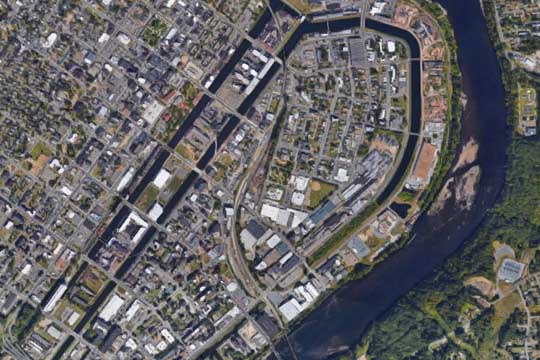
The site is part of downtown Holyoke’s former industrial district and was first used for manufacturing textiles in the 1880s. The site has also endured other operations, such as tool, cutlery, steam pump, and trolley track manufacturing. These uses have led to a contamination of the site, which was remediated as part of this project.
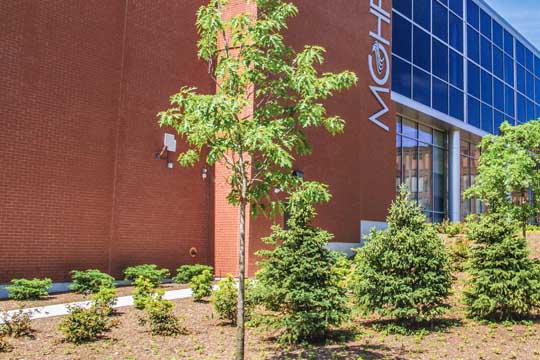
Native plants such as Inkberry, Sweetgale, and Meadowsweet remove contaminants and sediment from stormwater, preventing erosion and slowing runoff so water can soak into the soil instead of adding to the municipal storm water system.
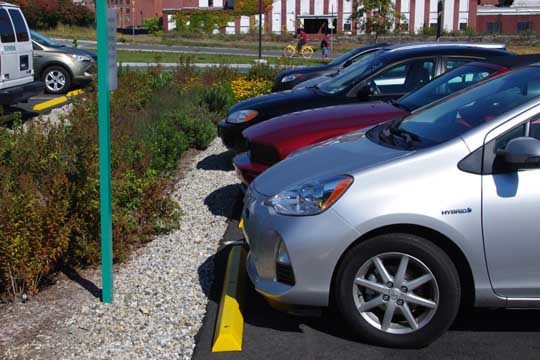
Strategically located just blocks away from the Holyoke Transportation Center which offers public transportation connections throughout the Pioneer Valley, and to Boston, and New York, we also have bicycle racks by the front door and preferred parking for low-emitting and fuel-efficient vehicles.
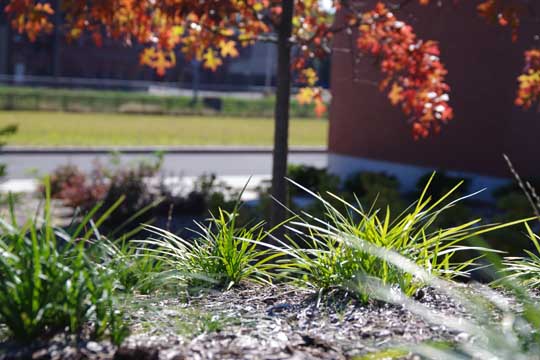
Plantings were selected so that the site does not require a permanent irrigation system. This saves both resources and expenses that would normally be needed to maintain the landscape. Additionally, this measure helps save the cost associated with installing and maintaining the irrigation system itself.

The project installed water fixtures that contribute to an estimated water savings of 33% in indoor potable water use as compared to EPAct 1992. That’s an estimated water savings of 26,680 gallons of water. Water efficient water closets with a flush rate of 1.28 gpf were used (saving approximately 6,000 gallons of water per year). Also, waterless urinals were put in place. These fixtures use a sealing liquid that is less dense than urine. Therefore, the urine sinks through the oil, trapping the odor below the oil layer and preventing it from escaping out into the rest of the bathroom. Without the need for water, these fixtures help save 11,320 gallons of water per year.